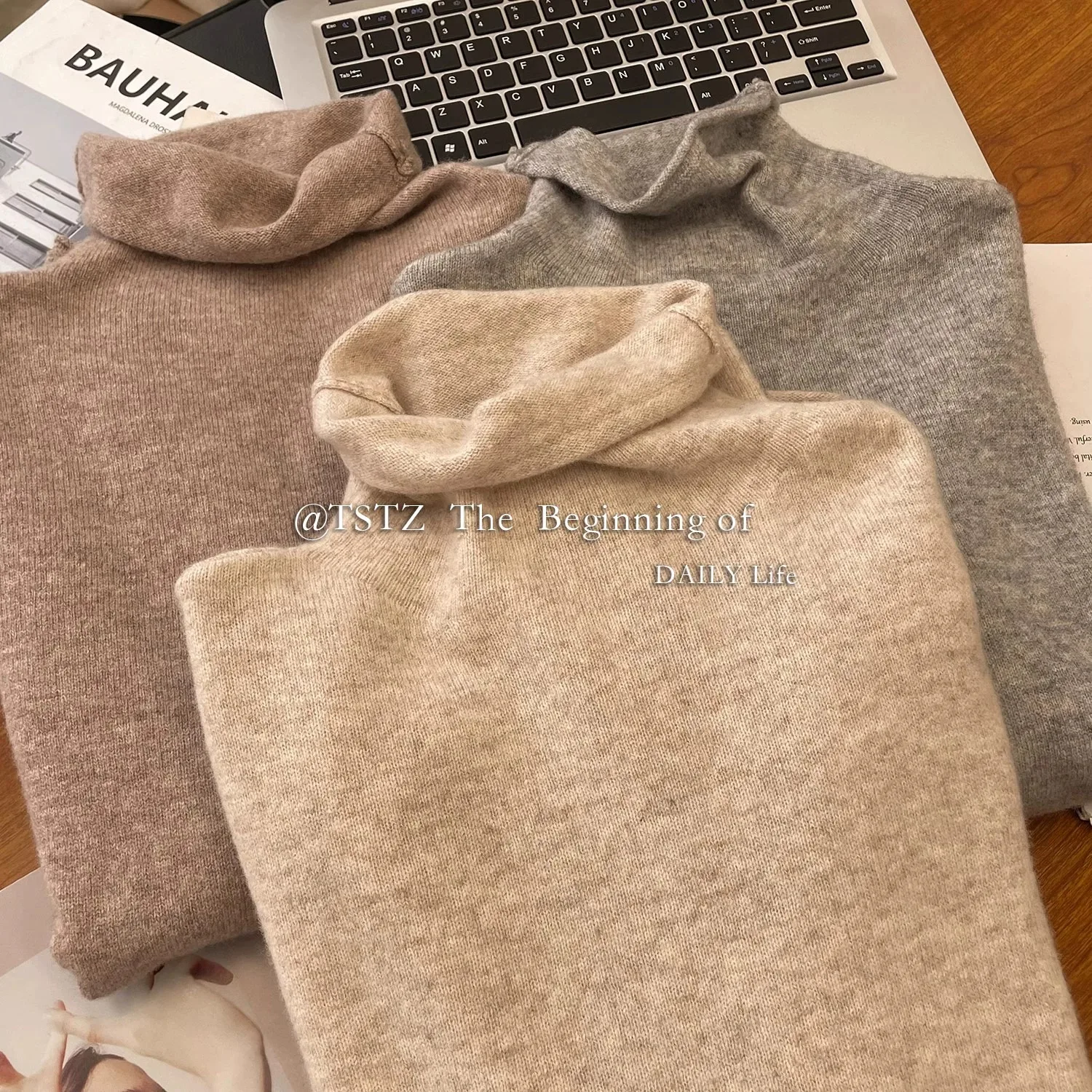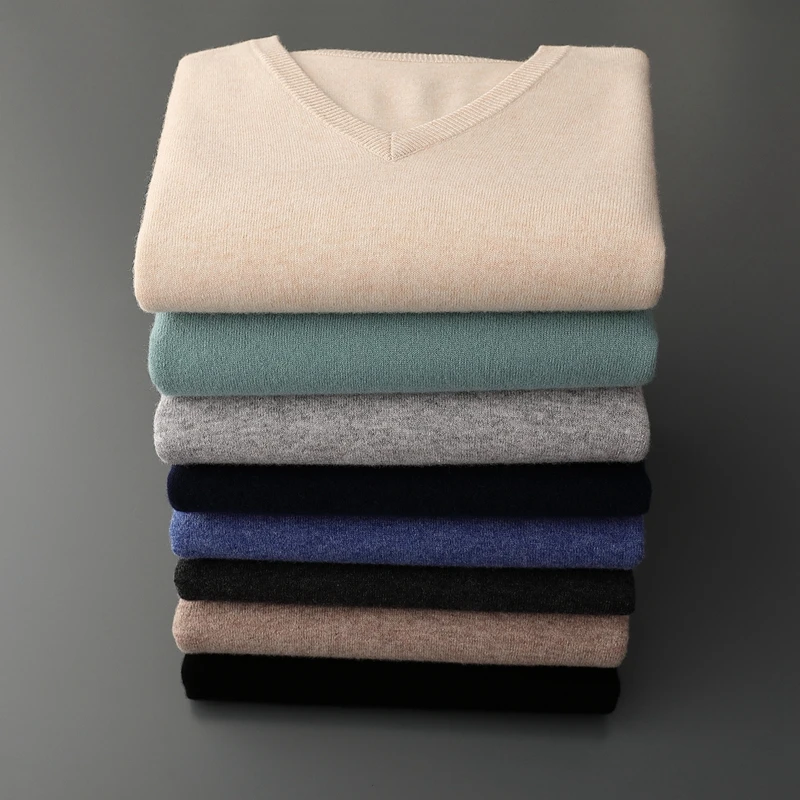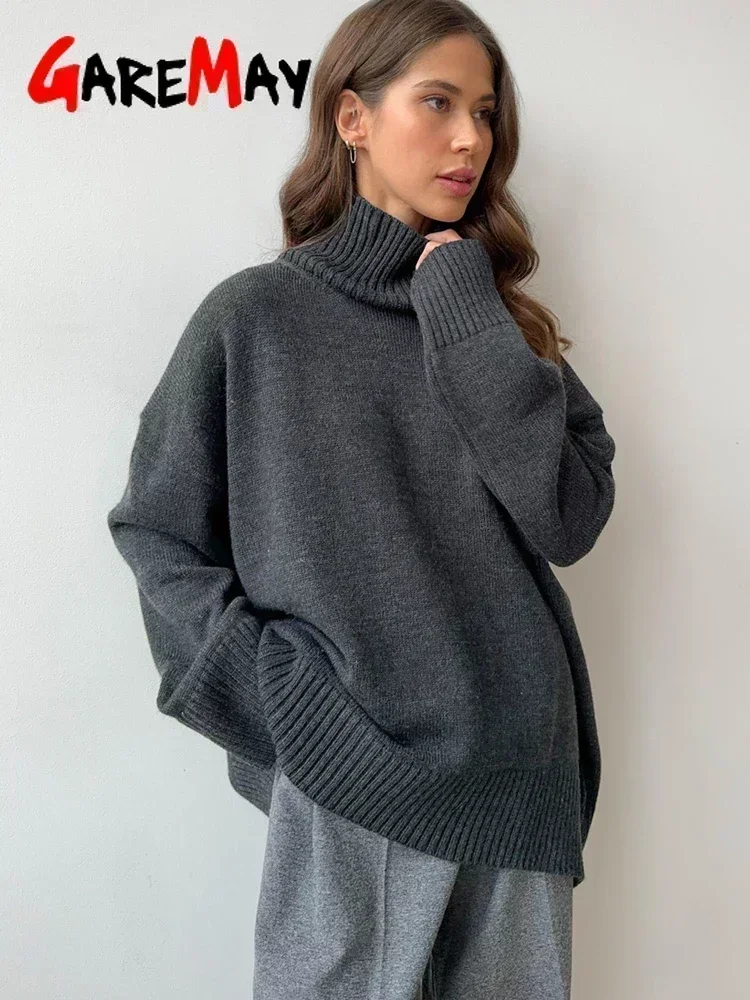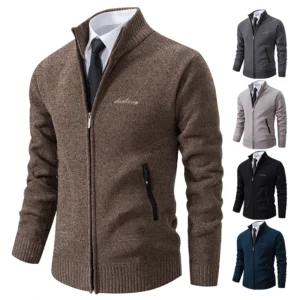Introduction to Cashmere’s Exceptional Luxury
Cashmere stands as one of the world’s most prized natural fibers, meticulously harvested from the soft undercoat of specific goat breeds that thrive in some of the planet’s most extreme environments. What makes this remarkable textile so coveted is its extraordinary combination of qualities found nowhere else in nature—incredible softness against the skin paired with exceptional warmth despite its lightweight nature.
The true wonder of cashmere lies in its remarkable thermal properties. Despite being incredibly lightweight, cashmere provides 3-8 times more warmth than traditional wool, making it nature’s perfect insulator. This exceptional warmth-to-weight ratio means cashmere garments offer substantial warmth without the bulk associated with other winter textiles.
Perhaps most striking about cashmere is its genuine scarcity. A single cashmere goat produces only 150-200 grams (5-7 ounces) of this precious fiber annually—barely enough for one-third of a sweater. This inherent rarity, combined with the specialized harvesting and processing techniques required, contributes significantly to cashmere’s status as a luxury material.
Throughout this guide, we’ll explore the fascinating journey of cashmere from the remote mountainsides where it originates to the finished garments cherished for generations. Understanding the origins, quality metrics, and true value of cashmere empowers you to make informed decisions when styling cashmere cardigans or selecting any cashmere investment.
The Origins of True Cashmere
The story of cashmere begins in some of the world’s most challenging landscapes, where harsh conditions have fostered the development of one of nature’s most remarkable fibers. Understanding where and how cashmere originates provides essential context for appreciating its exceptional qualities.
The geographic origin of cashmere significantly impacts its softness and durability. The finest fibers typically come from regions where goats have adapted to extreme temperature fluctuations, developing the densest and finest undercoats as natural protection against bitter cold.
The Cashmere Goat: Nature’s Luxury Fiber Producer
The true source of cashmere is the Capra hircus laniger goat and related subspecies, animals specifically adapted to survive in harsh mountain environments with extreme seasonal temperature shifts. These remarkable animals have evolved a unique double-coat structure as protection against severe winters:
- An outer layer of coarse guard hairs that repel moisture and provide basic protection
- An ultra-fine, soft undercoat that traps warm air close to the body for insulation
This biological adaptation is what creates the basis for cashmere’s exceptional properties. The undercoat fibers typically measure between 14-19 microns in diameter—approximately one-sixth the thickness of a human hair—giving cashmere its characteristic softness that remains unmatched by almost any other natural fiber.
The development of this precious undercoat directly correlates with environmental conditions. Goats living in the coldest, most extreme regions tend to produce the finest and densest undercoats, which is why the definitive guide to classic cashmere fabric often emphasizes the importance of origin in determining quality.
Traditional Harvesting and Processing Methods
The collection of cashmere represents centuries of traditional knowledge and requires precise timing and gentle handling:
- Harvesting occurs during the natural spring molting season when goats naturally shed their winter undercoat
- Skilled herders hand-comb the animals to collect loose undercoat fibers without harming the goats
- The collected material undergoes careful sorting to separate the valuable undercoat from coarser guard hairs
- Specialized de-hairing processes further refine the fiber collection
This labor-intensive approach preserves the integrity of the delicate fibers, maintaining their full length and natural qualities. Machine shearing, by contrast, can damage fibers and collect both coarse and fine hairs indiscriminately, requiring more intensive processing later.
The yield from this careful process is remarkably small—approximately 150-200 grams (5-7 ounces) per goat annually. To put this in perspective, creating a single cashmere sweater typically requires the annual yield from 3-4 goats, underscoring why genuine cashmere commands premium prices.
Historic Journey to Global Recognition
Cashmere’s transformation from regional specialty to global luxury icon spans centuries of craftsmanship and trade. The fiber’s journey begins in the Kashmir region (now spanning parts of India, Pakistan, and China), where artisans developed sophisticated techniques for processing this exceptional material and creating the legendary Kashmir shawls that would eventually capture European attention.
The Western world’s fascination with cashmere began in the late 18th century, when European travelers returned with these remarkable textiles, sparking demand among nobility and the wealthy. By the 19th century, European manufacturers began producing their own cashmere textiles, though with processes adapted to industrial production.
Despite modernization in processing techniques, cashmere has maintained its status as a premier luxury fiber. Today, many consumers consider cashmere cardigans worth the investment precisely because of this rich heritage and the material’s enduring qualities that have been valued across cultures for centuries.
Understanding Cashmere Quality: The Critical Metrics
While all cashmere comes from similar goat species, the quality can vary dramatically depending on numerous factors. Understanding these variations is essential for making informed decisions when investing in cashmere pieces. Industry experts evaluate cashmere using several precise measurements that directly affect how a finished garment will look, feel, and perform over time.
The term “cashmere” alone doesn’t guarantee exceptional quality—the range between the finest and most ordinary cashmere is substantial. Various testing methods, including microscopic examination, fiber length measurement, and strength testing, provide objective data to classify cashmere quality. This section explores the key metrics that determine true cashmere value beyond marketing claims.

Understanding these quality factors explains why seemingly similar brushed cashmere sweaters can differ significantly in price and performance. The careful brushing process enhances softness but must be applied to already superior fibers for optimal results.
Fiber Diameter: The Ultimate Determinant of Softness
Fiber diameter, measured in microns (one-thousandth of a millimeter), serves as the primary indicator of cashmere quality and directly determines how soft the material feels against the skin. Premium cashmere typically features fibers between 14-16 microns in diameter, with the very finest reaching as low as 14 microns.
To put this extraordinary fineness in perspective, a human hair typically measures 70-100 microns—making premium cashmere fibers approximately 5-7 times finer. This extreme fineness explains why high-quality cashmere feels dramatically softer than other materials and why even small variations in micron count create noticeable differences in comfort.
The relationship between diameter and softness is direct: as fiber diameter decreases, softness increases. This sensitivity to touch makes fiber diameter particularly important for items worn close to the skin, like women’s cashmere turtlenecks, where comfort is paramount.
Fiber Length: The Secret to Durability and Pilling Resistance
While fiber diameter determines softness, fiber length governs durability and resistance to pilling—those small balls of fiber that can form on the surface with wear. Premium cashmere features fibers measuring 30-36mm (1.18-1.42 inches) or longer, which create stronger yarns that maintain their integrity over time.
Longer fibers can be twisted together with less tension during spinning, reducing stress on the delicate material while creating stronger yarn. This structural advantage means properly constructed garments from long-fiber cashmere will maintain their appearance even with regular use.
The relationship between fiber length and pilling is particularly important to understand. Short fibers are more likely to work loose from the yarn structure during wear, creating the small pills that can make cashmere look worn and aged. Understanding why cashmere pills and how to fix it becomes easier when you recognize that superior initial fiber length dramatically reduces this tendency from the start.
Color and Crimp: Natural Qualities That Determine Value
The natural color of raw cashmere ranges from white and cream to various shades of brown, gray, and even some reddish tones. White and very light-colored fibers command premium prices because they provide versatility for dyeing into any color without requiring bleaching processes that can damage fibers.
Crimp—the natural waviness of cashmere fibers—plays a crucial though less visible role in quality. Greater crimp creates natural elasticity and superior insulation properties by trapping more air between fibers. This characteristic tends to correspond with fiber fineness; the finest fibers typically display more pronounced crimp.
The insulating efficiency that results from good crimp means that even lightweight cashmere cardigans provide exceptional warmth, making them ideal for layering in various climates.
The Ply Factor: Yarn Construction and Performance
Ply refers to the number of individual strands twisted together to create the final yarn used in cashmere garments. Common constructions include:
- Single-ply: One strand, creating lighter fabrics with a smoother drape
- Two-ply: Two strands twisted together, offering balanced durability and softness
- Four-ply: Four strands combined, creating substantial thickness for extra warmth
Each construction offers different benefits. Single-ply can achieve exceptional softness but may be less durable. Two-ply represents the most common construction for everyday luxury items, balancing durability with comfort. Heavier multi-ply constructions provide maximum warmth and longevity but with increased weight and sometimes slightly reduced softness.
Understanding cashmere thickness gauge helps explain why different constructions serve different purposes—from lightweight spring layers to substantial winter garments.
The Grading System Decoded: Beyond the A, B, C Labels
The cashmere industry typically uses a grading system—A, B, and C—to classify quality, though it’s important to understand these grades aren’t universally standardized or regulated. While helpful as general indicators, the letters alone don’t tell the complete quality story without supporting details about specific metrics.
| Grade | Fiber Diameter | Fiber Length | Typical Characteristics | Best Uses |
|---|---|---|---|---|
| A | 14-15.5 microns | 34mm+ | Exceptional softness, minimal pilling, lightweight warmth | Fine garments, luxury items worn against skin |
| B | 16-19 microns | 28-34mm | Good softness, moderate durability, more prone to pilling | Mid-range garments, layering pieces |
| C | 19+ microns | Under 28mm | Less softness, more substantial feel, variable durability | Outer layers, more affordable options |
This classification helps explain price variations in seemingly similar products and assists in choosing appropriate men’s cashmere pullovers based on intended use and budget considerations.
Grade A Cashmere: The Gold Standard
Grade A cashmere represents the pinnacle of quality with fibers typically measuring under 16 microns in diameter and exceeding 36mm in length. This combination creates garments with these distinctive characteristics:
- Extraordinary softness that feels almost weightless against the skin
- Superior insulation despite lightweight feel
- Natural resistance to pilling when properly cared for
- Exceptional drape that elegantly follows body contours
- Remarkable longevity with appropriate maintenance
While commanding the highest prices, Grade A cashmere offers superior value over time because garments maintain their beauty longer and provide unmatched comfort throughout their extended lifespan. The initial investment translates to better cost-per-wear value compared to lower-quality alternatives that require more frequent replacement.

Grade B and C: Understanding the Quality Spectrum
Grade B cashmere occupies the middle quality tier with fibers typically measuring 16-19 microns in diameter and 28-34mm in length. These characteristics create garments with:
- Good softness that most people find quite comfortable
- Effective warmth with slightly more substantial feel
- Moderate pill resistance requiring more frequent maintenance
- Good value proposition for everyday luxury items
Grade C represents the entry level for genuine cashmere with fibers exceeding 19 microns and typically measuring under 28mm. These characteristics result in:
- Noticeably less softness compared to higher grades
- More substantial feel and weight
- Greater tendency toward pilling and wear
- More affordable price points for cashmere introduction
Understanding these distinctions helps explain why experts recommend different grades for different purposes. For versatile pieces worn in multiple settings, the ultimate guide to layering cashmere cardigans often suggests investing in higher grades for core pieces that will see frequent use.
Practical Evaluation: How to Identify Quality Cashmere
Armed with knowledge about what makes cashmere exceptional, consumers can employ practical techniques to evaluate quality before purchasing. These hands-on assessment methods help separate truly premium pieces from those that may disappoint despite attractive pricing or persuasive marketing.
When evaluating cashmere, consider both objective quality metrics and ethical production practices. Many consumers now seek organic cashmere clothing and ethical options that support sustainable herding practices and fair treatment of workers throughout the production chain.
The Touch Test: Evaluating Softness and Hand Feel
The most immediate way to assess cashmere quality is through touch, using these specific techniques:
- Gently rub the fabric against your cheek or neck, where skin is more sensitive
- Notice the immediate sensation—premium cashmere feels cool initially, then quickly warms
- Assess whether the softness feels deep and consistent rather than just surface treatment
- Evaluate the weight relative to apparent thickness—high-quality cashmere feels surprisingly light for its warmth
True quality cashmere maintains a perfect balance between lightness and substance. Many oversized cashmere sweaters achieve their relaxed silhouette without excessive weight precisely because quality fibers provide structure without bulk.
Visual Inspection: What Your Eyes Can Tell You
Careful visual examination reveals important quality indicators:
- Even, consistent stitching without irregularities
- Subtle natural luster rather than artificial sheen
- Uniform color without streaking or blotchiness
- Appropriate “bloom” or slight halo effect without excessive fuzziness
- Clean finishing on seams and edges
Quality cashmere should appear refined rather than fuzzy, with a subtle glow rather than a shiny appearance. Excessive fuzziness often indicates shorter fibers that will lead to increased pilling over time.

The Stretch and Recovery Test: Elasticity Matters
A simple stretch test helps assess fiber quality and construction integrity:
- Gently pull the fabric in different directions, stretching slightly
- Release and observe how quickly and completely it returns to its original shape
- Note any distortion or permanent stretching that remains
- Repeat the test at different points on the garment
Quality cashmere should recover promptly and completely, maintaining its shape without distortion. This resilience indicates good fiber length and proper construction—qualities particularly important when styling a cashmere cardigan for different occasions where the garment needs to maintain its appearance throughout wear.
Decoding Labels and Price: Beyond Marketing Claims
Labels provide important but incomplete information about cashmere quality:
- Look for specific details about fiber diameter and origin rather than just “100% cashmere”
- Be wary of “cashmere blend” labels without percentage specifications
- Understand that “pashmina” should refer to a specific fiber diameter (under 16 microns), not just a style
- Consider price in context—exceptionally low prices typically indicate compromised quality
Knowledge about proper cashmere care helps protect your investment. Understanding how to wash cashmere without pilling is particularly important for maintaining fiber integrity over time.
Cashmere Wrap Sweaters, Women's Cashmere Pullovers
$75.89 Select options This product has multiple variants. The options may be chosen on the product pageCashmere Cable Knit Sweaters, Women's Cashmere Pullovers
Price range: $111.82 through $112.93 Select options This product has multiple variants. The options may be chosen on the product pageCropped Cashmere Sweaters, Women's Cashmere Pullovers
$155.77 Select options This product has multiple variants. The options may be chosen on the product page- Price range: $102.02 through $109.37 Select options This product has multiple variants. The options may be chosen on the product page
Oversized Cashmere Sweaters, Plus Size Cashmere Sweaters, Women's V-Neck Cashmere Sweaters
$136.87 Select options This product has multiple variants. The options may be chosen on the product pageStriped Cashmere Sweaters, Women's Cashmere Pullovers
$139.68 Select options This product has multiple variants. The options may be chosen on the product page
Maintaining Your Investment: Care Fundamentals
Quality cashmere, properly maintained, becomes more of an investment than an expense. The right care techniques preserve both appearance and performance, extending the lifespan of premium pieces for many years—sometimes decades—of enjoyment.
Hand washing with gentle detergent specifically formulated for delicates provides the safest cleaning method. The process requires minimal agitation, lukewarm water, and careful handling to prevent stretching or felting. After washing, cashmere should be gently reshaped and dried flat on a clean towel away from direct heat or sunlight.
Proper storage plays an equally important role in cashmere longevity. Folding rather than hanging prevents stretching, while cedar blocks or lavender sachets provide natural moth deterrents. Clean garments thoroughly before seasonal storage, and store in breathable cotton bags rather than plastic, which can trap moisture and damage fibers.
Even premium cashmere eventually shows wear, but minor pilling can be addressed with a special cashmere comb or gentle fabric shaver designed for delicates. Regular, gentle maintenance prevents more significant deterioration and maintains the garment’s beautiful appearance.
Is Sustainable Cashmere Possible?
As environmental awareness grows, the cashmere industry faces important questions about sustainability. Traditional production has raised concerns about land degradation from overgrazing and animal welfare issues in some regions. However, multiple initiatives now promote more sustainable approaches.
Certified sustainable cashmere programs establish standards for land management, animal treatment, and herder compensation. These programs typically involve smaller herds with better care rather than maximum production volume, resulting in both ecological benefits and often superior fiber quality.
For consumers, investing in higher-quality cashmere actually supports sustainability by reducing the “fast fashion” cycle. Premium cashmere pieces that last for many years reduce overall consumption compared to lower-quality items requiring frequent replacement. Additionally, choosing pieces in classic designs rather than trendy styles ensures longevity beyond changing fashion cycles.
Estate Cloth’s approach emphasizes quality that lasts, supporting the principle that truly sustainable luxury comes from creating fewer, better things that stand the test of time both physically and aesthetically.
What Makes Cashmere Worth the Investment?
The true value of cashmere extends far beyond its initial purchase price. When quality metrics align—fine fiber diameter, optimal length, proper construction—cashmere delivers exceptional performance that justifies its premium positioning:
- Unmatched comfort from natural fibers that adjust to body temperature
- Remarkable durability when properly maintained, with quality pieces often lasting decades
- Timeless appeal that transcends fashion trends
- Natural performance without synthetic additives or treatments
Cost-per-wear analysis typically favors higher-quality cashmere despite higher initial prices. A premium cashmere sweater worn regularly for 10+ years provides better value than multiple lower-quality alternatives replaced every season or two due to pilling, stretching, or fiber breakdown.
The finest cashmere represents not just a purchase but an investment in daily comfort and enduring style. With proper knowledge about quality indicators and appropriate care, consumers can confidently select pieces that will provide exceptional comfort and value for years to come.







